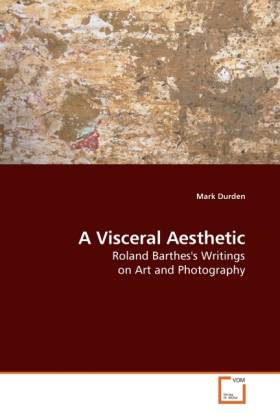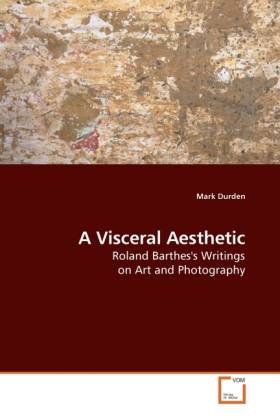
- Afhalen na 1 uur in een winkel met voorraad
- Gratis thuislevering in België vanaf € 30
- Ruim aanbod met 7 miljoen producten
- Afhalen na 1 uur in een winkel met voorraad
- Gratis thuislevering in België vanaf € 30
- Ruim aanbod met 7 miljoen producten
Zoeken
A Visceral Aesthetic
Roland Barthes's Writings on Art and Photography
Mark Durden
Paperback | Engels
€ 48,45
+ 96 punten
Omschrijving
This book addresses three aspects of Roland Barthes's visceral aesthetic. It begins by looking at the physiological aesthetics in his early writings his book on Jules Michelet, essays on Dutch painting, George Bataille and Alain Robbe-Grillet are discussed in relationship to Jean-Paul Sartre s disavowal of the visceral in his philosophy. Part Two explores the accent on excess and desire in language in Barthes s later theories of the text, especially in terms of the influence of Julia Kristeva. It also considers his fascination with forms of expression which seem to go beyond language and meaning his essays on music and the painters Bernard Réquichot and Cy Twombly. The third aspect of the visceral, considers Barthes s writings on photography, and especially Camera Lucida, a book that involves a strongly affective response to images at a time when images were felt to be mediating desire.
Specificaties
Betrokkenen
- Auteur(s):
- Uitgeverij:
Inhoud
- Aantal bladzijden:
- 96
- Taal:
- Engels
Eigenschappen
- Productcode (EAN):
- 9783639160741
- Uitvoering:
- Paperback
- Afmetingen:
- 150 mm x 220 mm
- Gewicht:
- 144 g

Alleen bij Standaard Boekhandel
+ 96 punten op je klantenkaart van Standaard Boekhandel
Beoordelingen
We publiceren alleen reviews die voldoen aan de voorwaarden voor reviews. Bekijk onze voorwaarden voor reviews.











